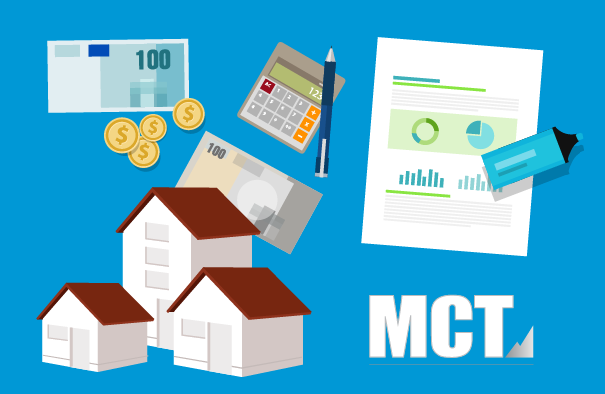Unless you live under a rock, or in an increasingly blissful state of ignorance, you have likely noticed that government-bond yields have fallen the most since 2008 after multiple U.S. bank failures spurred traders to reassess the outlook for additional Federal Reserve rate hikes.
The current thinking is that these bank failures will restrict credit in the banking sector, which will have a similar effect to rate hikes, essentially doing the Fed’s bidding on its behalf. The flight-to-safety trade has already occurred as investors piled into sovereign bonds and MBS.
Read this article to learn more about our current perspective on the housing market after SVB collapse and also read our article on housing market predictions for 2023 to learn further market trend insights from MCT experts.

Bank Portfolios Suffering
Periods with inverted yield curves are especially rough on banks because it makes it harder to generate net interest income, the difference between what they receive on their investments minus their borrowing costs, which keeps deposit rates low. If deposit rates are lower than other options people are going to continue to pull money out of the banks. Put another way, this is a slow motion bank run (read: not a bank panic, simply people making rational financial decisions). In practice, rising Treasury yields have caused people to pull their deposits out of banks to buy Treasuries directly from the government.
All U.S. banks have a chunk of their money in Treasuries and other bonds. The latest round of quantitative easing saw the banking system flooded, many would say unnecessarily, with easy credit and thus growing deposits. That massive infusion of credit was ultimately poured by banks into securities markets. In fact, the percentage of securities on U.S. banks’ balance sheets rose from 27% in March 2020 to a record high of 36% in February last year. And large domestic banks increased their agency MBS holdings by nearly 40% from March 2020 through February 2022.
Silicon Valley Bank’s Cardinal Sin
But then inflation, in the eyes of the Fed, shifted from “transitory” to an issue requiring central banks’ attention. Before banks could get back to anywhere close to historical portfolio composition averages, the Federal Reserve engaged in the most aggressive monetary policy tightening in decades. Those assets on banks’ balance sheets dropped in value. Silicon Valley Bank’s cardinal sin was to buy Treasuries and MBS without hedging the interest rate risk. When the bank was met with a deluge of withdrawal requests, it sold its available-for-sale securities at a loss in the hope it would cover withdrawals. Other banks might have better risk management, but if deposits are falling, so will lending which will slow the economy.
The Fed’s New Credit Facility
The Fed’s new credit facility, termed the Bank Term Funding Program (BTFP), allows banks to pledge U.S. Treasuries, agency debt and mortgage-backed securities, and other qualifying assets as collateral at 100% of face, or par, for a loan to pay off deposit requests instead of selling securities at a loss into the market. It is a way for them to “sell” their securities for a year without taking losses. The Fed hopes that this will prevent a bank run. However, even if the temporary bank facility directly impacts Treasury and agency MBS prices, it isn’t going to immediately stem the problem of deposits yielding less than Treasuries and other bonds.
The largest front end rate move in nearly four decades, accompanied by a large spike in implied volatility and a large risk-off move led by the financial sector, argues for more risk premium in spreads. And we have seen that: agency MBS have widened 30-35bps in a week. It seems most market participants now expect further widening from here as failed bank portfolios are likely to be a significant weight on the market and the fallout from these events scares banks from buying agency MBS again, even if these bank problems aren’t MBS specific.
Over-extended QE forced banks to reach for yield “out the curve” at the worst possible price at the worst possible time, immediately followed by a violent reversal of monetary policy.
Current Secondary Mortgage Market After the Silicon Valley Bank Collapse
We learned earlier this week that inflation at the consumer level rose 0.4% month-over-month (a 0.1% uptick from January) and 6% year-over-year. If you strip out food and energy, inflation rose 0.5% month-over-month and 5.5% year-over-year. If it weren’t for the bank failures, the inflation numbers would justify a 50 basis point hike in the fed funds rate next week, but with cracks showing in the financial sector they probably can’t do that. The Fed Funds futures are predicting another 25 basis points with a small probability that the Fed stands pat.
Cash volumes executed in TBAs the past couple of days have been nearly double 2023 averages, and asset prices are likely still headed lower as the unwind of this bubble continues. The bottom line is that the Fed is once again between a rock and a hard place. Every time the Fed takes its foot off the brake, or the market perceives they’re taking their foot off the brake, and the job is not done, the central bank makes its work even harder. We have a bumpy ride in store, but ultimately when the dust settles, the rate move in the past week is actually a clear positive for the sector.

We’re Here to Help Your Business
With our hedge advisory services, our team of experts work with your secondary market staff to create a daily cycle of disciplines for successful pipeline management. Whether you are making the move to mandatory executions, seeking improvements to your mortgage pipeline management process, or considering a change in your hedge advisor, MCT’s Hedge Advisory blends technology and service to achieve your goals. As the industry leader in mortgage pull-through analytics and best execution with the highest staff-to-client ratio, lenders of every size trust MCT to manage risk and optimize profitability in their mortgage loan pipeline management. If you adhere to these practices in this tough environment, you are putting yourself in the best possible position. It’s worth exploring all execution options and talking to us, both for your bottom line and overall enterprise viability.
Related Articles:









